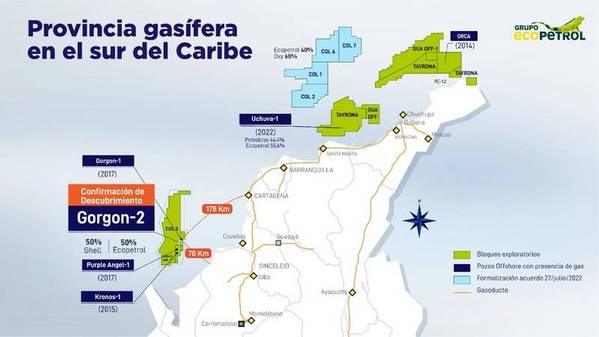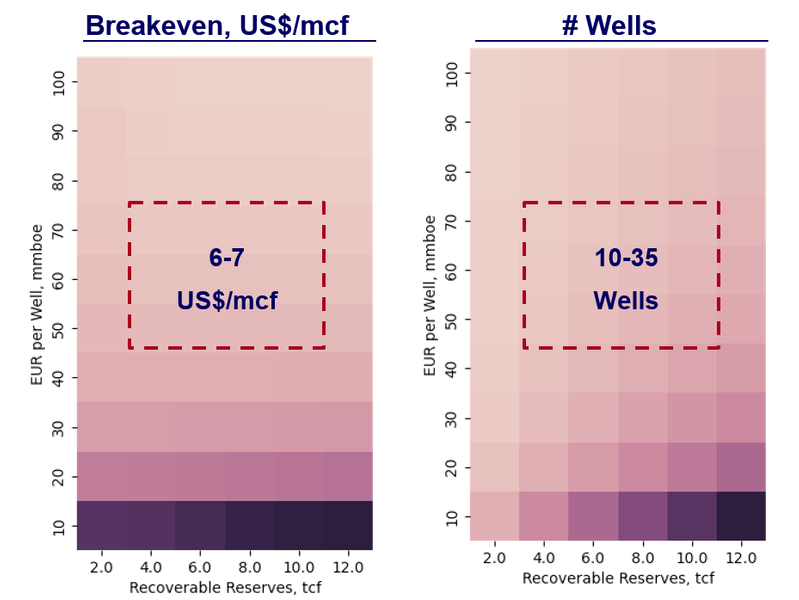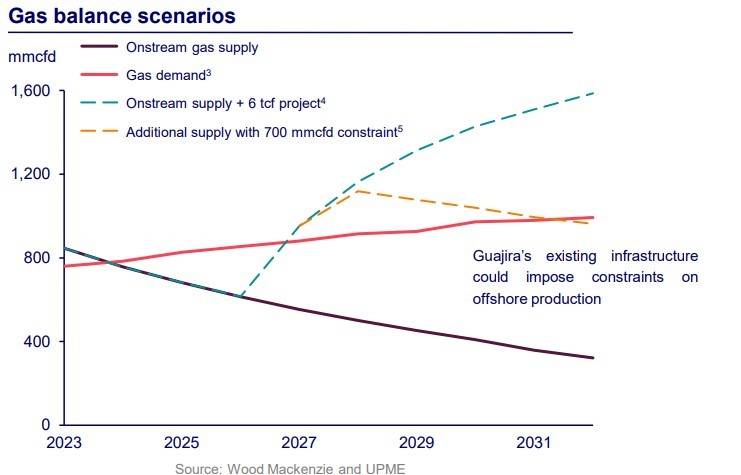
Offshore development of new gas assets has been identified as a key piece to Colombia’s long-term energy security, but significant challenges remain. The size, production capability, and required infrastructure investments all make the situation uncertain, energy industry intelligence group Wood Mackenzie has found.
According to Wood Mackenzie, the development of recent offshore gas discoveries at Gorgon, Uchuva, and Orca would need to achieve a breakeven point range from US$6 to US$7/million cubic feet (mcf), based on an analysis of multiple scenarios varying the potential recoverable resources and ultimate well productivities, to help avoid a future demand gap.
Currently, Colombia is on course to run short of domestic gas this decade, with a gap between gas supply, including import capacity, and demand of 560 million cubic feet per day (mmcfd) projected for 2030.
“This is a substantial challenge for Colombia to overcome and many critical conditions must be met,” said Vinicius Moraes, research analyst, Latin America Upstream for Wood Mackenzie. “As these projects are all still in the evaluation stage, there is still considerable uncertainty regarding potential production volumes, project timelines and costs. The operators drilling exploration wells have so far kept quiet on potentiality of these resources. Time is running out, and if Colombia doesn’t want to rely on LNG imports until the end of the decade, it must start progressing offshore discoveries towards the development stage.”
 Source: Wood Mackenzie
Source: Wood Mackenzie
Kuy Koh, senior research analyst, Latin American Upstream for Wood Mackenzie, said that current infrastructure presents another challenge and could hinder progress
“Even if the offshore production materializes, there are still logistics issues as the current pipeline infrastructure is inadequate and must be extended,” said Koh.
“There is limited capacity to move gas from offshore projects and the coast to Colombia’s interior. If this is not addressed, it would put constraints on potential production. Furthermore, both offshore developments and expansion of onshore infrastructure would be subject to approval from communities in public consultations, which could pose additional challenges.”

“Without any new major supply sources, the focus will be on the continued development of current assets,” said Moraes. “Ultimately, the question will boil down to economic viability. Colombia must weigh the costs of developing its offshore gas resources against a potentially oversupplied international LNG market.”
“Our research shows that offshore gas projects have an average lead time of 11 years from discovery to first gas,” said Koh. “In an optimistic scenario, where Colombian offshore discoveries closest to shore could start production by 2027, they would be competing against an oversupplied LNG market with prices hovering around the US$6 mark. If everything aligns in a timely fashion for offshore developments, including significant infrastructure improvements, Colombia could face a competitive export market by 2030.”
Related:



